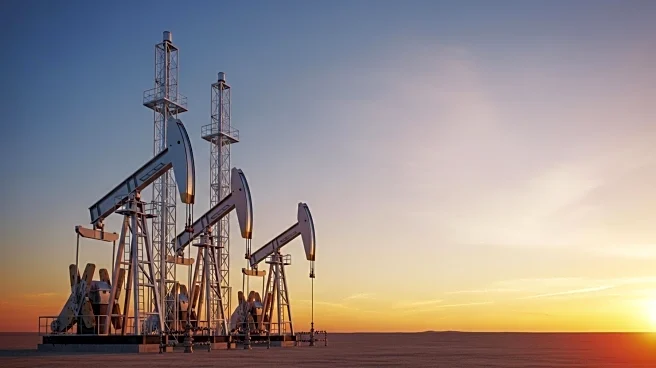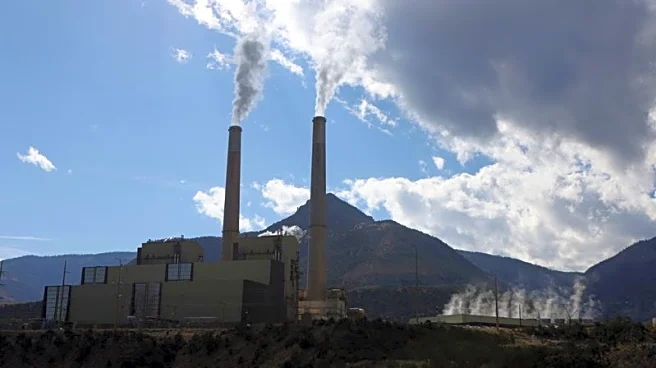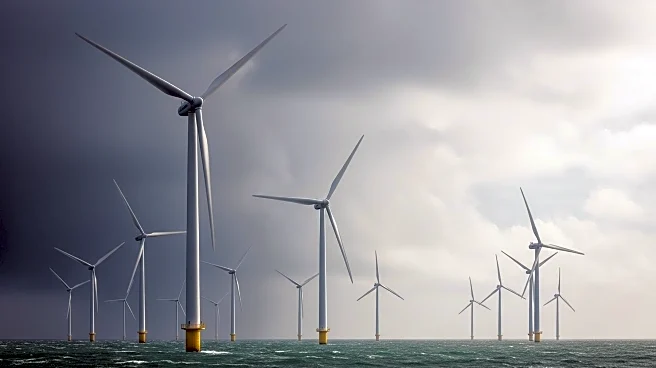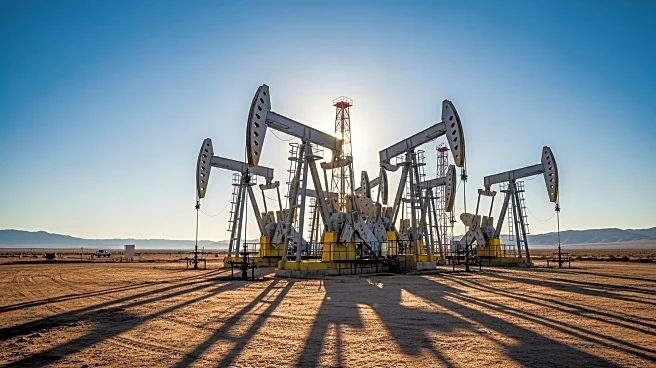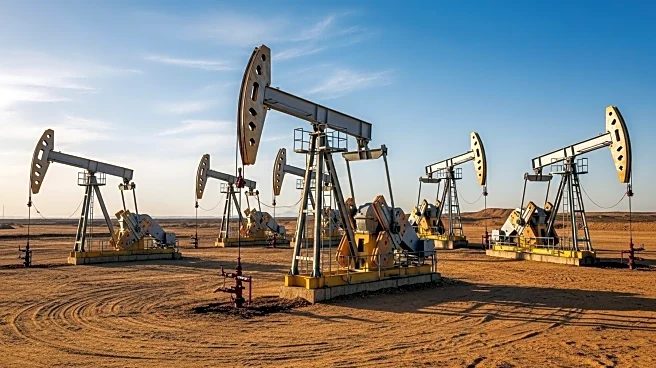What is the story about?
What's Happening?
The Energy Information Administration (EIA) has released a report indicating that ten counties within the Permian Basin have been responsible for 93% of the growth in U.S. oil production since 2020. Between 2020 and 2024, the total crude oil and lease condensate production in the United States increased by 1.9 million barrels per day (bpd), with these counties contributing significantly to this growth. Lea and Eddy counties in New Mexico alone accounted for nearly 1.0 million bpd, representing 52% of the production growth. Martin and Midland counties in Texas contributed an additional 0.40 million bpd, while six other Texas counties collectively added 0.36 million bpd. The primary geologic formations driving this growth are the Bone Spring, Spraberry, and Wolfcamp formations.
Why It's Important?
The concentration of oil production growth in these ten counties highlights the strategic importance of the Permian Basin in the U.S. energy sector. This region's prolific output has significant implications for national energy policy, economic stability, and global oil markets. The dominance of the Permian Basin underscores the U.S.'s ability to maintain its position as a leading oil producer, which can influence global oil prices and energy security. Stakeholders in the energy industry, including investors and policymakers, may focus on this region for future development and investment opportunities.
What's Next?
As the Permian Basin continues to be a focal point for oil production, further exploration and technological advancements are expected to enhance output efficiency. Companies operating in these counties may seek to expand their operations or invest in new technologies to maximize production. Additionally, environmental and regulatory considerations may arise as production intensifies, potentially leading to policy changes or increased scrutiny from environmental groups.
Beyond the Headlines
The concentration of oil production in a few counties raises questions about regional economic disparities and environmental impacts. While these areas benefit economically from increased production, they may also face challenges related to infrastructure strain and environmental degradation. Long-term sustainability and community impacts will be critical considerations for stakeholders as production continues to grow.
AI Generated Content
Do you find this article useful?
